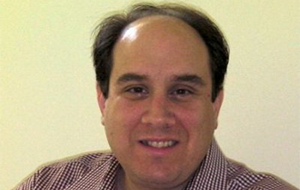When it comes to innovation, CIOs are increasingly being called upon to predict the potential business impact of emerging technologies, lead the development of new IT-enabled products and services, and identify innovative technologies for competitive differentiation. We sat down with several IT executives to ask them how they are organizing and fostering the development of new ideas.
 "You talk about innovation and if I then gave you rigorous 10 step process to foster innovation it probably would be stifling. It starts from the top down. Open door policy. We hire — I like to call them a smaller set of more experienced and more well-rounded people that are used to working in a manner where the problems we are solving now should be spawning thought processes to address the problem differently or better later. Little things we do. We split up meetings we have as a team, so ideas don’t get munged. We do “lunch and learns” as a team, so we don’t have somebody bring up in a status type meeting. We carve out time to teach each other about things we should be looking at; once some person volunteers to teach people about some new technology they are using, that creates momentum for other people to be looking as well."
"You talk about innovation and if I then gave you rigorous 10 step process to foster innovation it probably would be stifling. It starts from the top down. Open door policy. We hire — I like to call them a smaller set of more experienced and more well-rounded people that are used to working in a manner where the problems we are solving now should be spawning thought processes to address the problem differently or better later. Little things we do. We split up meetings we have as a team, so ideas don’t get munged. We do “lunch and learns” as a team, so we don’t have somebody bring up in a status type meeting. We carve out time to teach each other about things we should be looking at; once some person volunteers to teach people about some new technology they are using, that creates momentum for other people to be looking as well."
Dr. Jeffry Nimeroff, Chief Information Officer at Zeta Interactive
 "Ultimately, we’re a service organization and should be approaching this not just as a customer service organization but from a consulting perspective. We should be able to consult our business no different than any other consulting company on how to leverage IT to meet business needs. We should know the business as well if not better than some of the business folks."
"Ultimately, we’re a service organization and should be approaching this not just as a customer service organization but from a consulting perspective. We should be able to consult our business no different than any other consulting company on how to leverage IT to meet business needs. We should know the business as well if not better than some of the business folks."
Bart Murphy, CTO at York Risk Services Group, CIO, and CTO at CareWorks Family of Companies, and President at CareWorks Tech
 "That’s a double-edged sword. It’s a very critical function in the high tech world, but at the same time in the IT space. The primary goal is to ensure minimal impact to the business when adding new tools and technology; CIOs tend to be paranoid about bringing new tools into the environment; there needs to be a right balance between the two. I like the 20 percent concept Google has where 20 percent of your time is going to innovation. We have something call SanDisk IT labs where we have folks bring in solutions and try them out; we see some good things, we have some failures, and sometimes we roll these out to our customers. That motivates the team because they want to work on cutting edge solutions. So they get to do that, but we make sure they stay focused on their everyday job."
"That’s a double-edged sword. It’s a very critical function in the high tech world, but at the same time in the IT space. The primary goal is to ensure minimal impact to the business when adding new tools and technology; CIOs tend to be paranoid about bringing new tools into the environment; there needs to be a right balance between the two. I like the 20 percent concept Google has where 20 percent of your time is going to innovation. We have something call SanDisk IT labs where we have folks bring in solutions and try them out; we see some good things, we have some failures, and sometimes we roll these out to our customers. That motivates the team because they want to work on cutting edge solutions. So they get to do that, but we make sure they stay focused on their everyday job."
Ravi Naik, CIO, Sandisk
 "I have built a world-class team who are driven and empowered ZEOs (at Zuora, every employee is what we call a ZEO - the CEO of their Zuora career). I have hired bigger and better than myself and focus on leadership with genuine inspiration and set forth expectations of an inherent standard of excellence. I challenge the team to continually innovate in all things we do and ensure they carve out time within agile sprints for creative thinking. We run demo days weekly to inspire creativity across the organization for everyone to share ideas, concepts, designs, prototypes and solutions. I encourage my team and give them the confidence to take on greater risks and know that if they are not failing, not always learning or are too comfortable, they are most likely not challenging themselves beyond their expectations. How else can we truly reach our full potential?"
"I have built a world-class team who are driven and empowered ZEOs (at Zuora, every employee is what we call a ZEO - the CEO of their Zuora career). I have hired bigger and better than myself and focus on leadership with genuine inspiration and set forth expectations of an inherent standard of excellence. I challenge the team to continually innovate in all things we do and ensure they carve out time within agile sprints for creative thinking. We run demo days weekly to inspire creativity across the organization for everyone to share ideas, concepts, designs, prototypes and solutions. I encourage my team and give them the confidence to take on greater risks and know that if they are not failing, not always learning or are too comfortable, they are most likely not challenging themselves beyond their expectations. How else can we truly reach our full potential?"
Alvina Antar, CIO, Zuora








